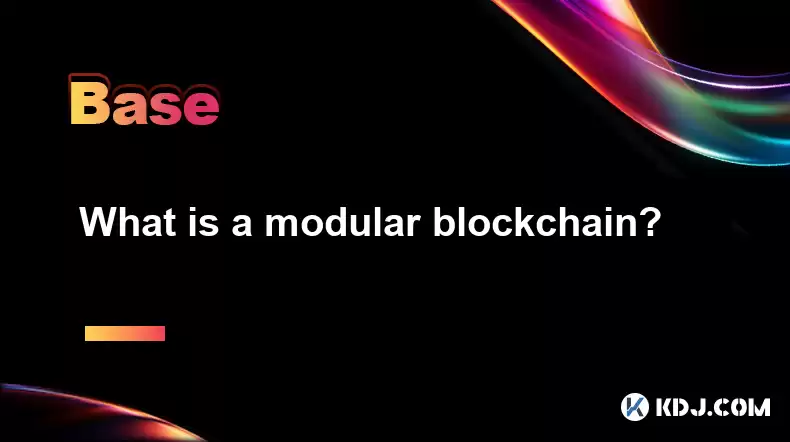-
 Bitcoin
Bitcoin $115200
-2.68% -
 Ethereum
Ethereum $3601
-5.16% -
 XRP
XRP $3.035
-2.96% -
 Tether USDt
Tether USDt $0.9997
-0.04% -
 BNB
BNB $764.5
-5.43% -
 Solana
Solana $168.1
-5.92% -
 USDC
USDC $0.9998
-0.02% -
 Dogecoin
Dogecoin $0.2090
-4.80% -
 TRON
TRON $0.3272
-0.49% -
 Cardano
Cardano $0.7306
-5.00% -
 Hyperliquid
Hyperliquid $39.16
-12.22% -
 Stellar
Stellar $0.3967
-4.96% -
 Sui
Sui $3.566
-5.95% -
 Chainlink
Chainlink $16.55
-6.57% -
 Bitcoin Cash
Bitcoin Cash $552.3
-3.90% -
 Hedera
Hedera $0.2516
-4.69% -
 Avalanche
Avalanche $21.99
-5.75% -
 Toncoin
Toncoin $3.621
-0.28% -
 Ethena USDe
Ethena USDe $1.000
-0.03% -
 UNUS SED LEO
UNUS SED LEO $8.951
0.02% -
 Litecoin
Litecoin $105.9
-3.59% -
 Shiba Inu
Shiba Inu $0.00001232
-5.00% -
 Polkadot
Polkadot $3.640
-5.55% -
 Uniswap
Uniswap $9.048
-7.03% -
 Monero
Monero $301.8
-1.51% -
 Dai
Dai $0.9999
-0.01% -
 Bitget Token
Bitget Token $4.334
-3.66% -
 Pepe
Pepe $0.00001064
-6.17% -
 Cronos
Cronos $0.1367
-5.78% -
 Aave
Aave $259.2
-4.59%
What is a modular blockchain?
Modular blockchains separate components like consensus, execution, and data availability into specialized modules, enhancing scalability, flexibility, and efficiency.
Apr 16, 2025 at 06:21 pm

A modular blockchain is a type of blockchain architecture that separates different components of the blockchain system into distinct, specialized modules. This approach allows for greater flexibility, scalability, and efficiency compared to monolithic blockchain designs, where all functionalities are tightly integrated into a single, comprehensive system. In a modular blockchain, each module can be developed, upgraded, and maintained independently, which can lead to faster innovation and easier adaptation to new technological advancements.
Benefits of Modular Blockchains
One of the primary benefits of a modular blockchain is its ability to enhance scalability. By separating the consensus mechanism, execution environment, and data availability into different modules, developers can optimize each component independently. This means that a modular blockchain can handle a higher volume of transactions and process them more quickly than a monolithic blockchain. For example, if a new consensus algorithm is developed that promises better performance, it can be integrated into the consensus module without affecting the rest of the system.
Another significant advantage is flexibility and customization. Different projects within the cryptocurrency space have unique requirements, and a modular blockchain allows developers to tailor the system to meet those specific needs. For instance, a project focused on decentralized finance (DeFi) might prioritize a robust execution environment, while a project focused on data storage might emphasize data availability. With a modular design, each project can configure its blockchain to optimize for its primary use case.
Components of a Modular Blockchain
A modular blockchain typically consists of several key components, each responsible for a specific function within the system. The consensus module handles the validation and agreement on the state of the blockchain. Common consensus mechanisms include Proof of Work (PoW), Proof of Stake (PoS), and Delegated Proof of Stake (DPoS). This module ensures that all nodes on the network agree on the sequence and validity of transactions.
The execution module is responsible for processing transactions and executing smart contracts. This component can be tailored to support different programming languages and runtime environments, making it easier for developers to build and deploy decentralized applications (dApps). For example, Ethereum's execution environment, the Ethereum Virtual Machine (EVM), allows developers to write smart contracts in Solidity.
The data availability module ensures that all necessary data is accessible to nodes on the network. This is crucial for maintaining the integrity and transparency of the blockchain. In some modular blockchains, data availability is managed through a separate layer, which can help reduce the load on the main blockchain and improve overall performance.
Examples of Modular Blockchains
Several projects in the cryptocurrency space have adopted a modular blockchain approach. Celestia is a notable example, focusing on providing scalable data availability solutions. By separating data availability into its own module, Celestia enables other blockchain projects to leverage its infrastructure without needing to manage their own data storage systems.
Cosmos is another example of a modular blockchain ecosystem. It uses the Inter-Blockchain Communication (IBC) protocol to facilitate communication between different blockchains, each of which can be optimized for specific use cases. The Cosmos Hub serves as the central module that coordinates these interconnected blockchains, allowing them to share assets and data seamlessly.
Polkadot also employs a modular architecture, with its relay chain serving as the central coordination point for multiple parachains. Each parachain can be customized to meet the needs of different projects, and they can communicate with each other through the relay chain. This modular approach allows Polkadot to support a wide range of decentralized applications and services.
Challenges and Considerations
While modular blockchains offer numerous advantages, they also come with certain challenges. Interoperability between different modules can be complex, requiring careful design to ensure that they work together seamlessly. For example, if the consensus module and execution module are not properly synchronized, it could lead to inconsistencies in the blockchain's state.
Security is another critical consideration. With multiple modules, the attack surface of the blockchain increases, as vulnerabilities in any one module could potentially compromise the entire system. Developers must implement robust security measures across all components and ensure that updates and upgrades are thoroughly tested before deployment.
Complexity is also a factor to consider. While modularity can lead to more efficient and scalable systems, it also requires a higher level of technical expertise to manage and maintain. Developers must have a deep understanding of how each module interacts with the others and be able to troubleshoot issues that arise from these interactions.
Implementation of Modular Blockchains
Implementing a modular blockchain involves several key steps. Here's a detailed look at the process:
Define the Architecture: Start by outlining the overall architecture of the blockchain. Identify the key components that need to be modularized, such as the consensus mechanism, execution environment, and data availability layer. Consider the specific requirements of your project and how each module will contribute to meeting those needs.
Develop Each Module: Once the architecture is defined, begin developing each module independently. For the consensus module, choose a suitable consensus algorithm based on your project's requirements for security, scalability, and decentralization. For the execution module, decide on the programming language and runtime environment that will be supported. For the data availability module, design a system that can efficiently store and retrieve data as needed.
Integrate and Test: After developing each module, integrate them into a cohesive system. This involves setting up the communication protocols between modules and ensuring that they work together as intended. Thorough testing is crucial at this stage to identify and resolve any interoperability issues. Use testnets to simulate real-world conditions and validate the performance of the modular blockchain.
Deploy and Maintain: Once the modular blockchain is fully tested and ready, deploy it to the mainnet. Monitor its performance closely and be prepared to make adjustments as needed. Regular maintenance and updates are essential to keep the system running smoothly and to incorporate new features and improvements. Engage with the community and gather feedback to guide ongoing development efforts.
Frequently Asked Questions
Q: How does a modular blockchain differ from a traditional blockchain?
A: A modular blockchain separates its functionalities into distinct modules, allowing for independent development and optimization of each component. In contrast, a traditional blockchain has a monolithic architecture where all functionalities are tightly integrated into a single system. This makes modular blockchains more flexible and scalable but also more complex to manage.
Q: Can existing blockchain projects transition to a modular architecture?
A: Yes, existing blockchain projects can transition to a modular architecture, but it requires careful planning and execution. The process involves refactoring the existing codebase to separate different components into modules, which can be challenging and time-consuming. It's essential to thoroughly test the new architecture to ensure that it maintains the same level of security and performance as the original system.
Q: What are the potential risks of using a modular blockchain?
A: The main risks of using a modular blockchain include increased complexity, potential interoperability issues between modules, and a larger attack surface due to the separation of components. These risks can be mitigated through careful design, robust security measures, and thorough testing, but they require ongoing attention and management.
Q: How can developers ensure the security of a modular blockchain?
A: Developers can ensure the security of a modular blockchain by implementing strong security protocols across all modules, regularly auditing the code for vulnerabilities, and conducting thorough penetration testing. It's also important to keep the system up to date with the latest security patches and to engage with the community to identify and address potential security issues promptly.
Disclaimer:info@kdj.com
The information provided is not trading advice. kdj.com does not assume any responsibility for any investments made based on the information provided in this article. Cryptocurrencies are highly volatile and it is highly recommended that you invest with caution after thorough research!
If you believe that the content used on this website infringes your copyright, please contact us immediately (info@kdj.com) and we will delete it promptly.
- Bitcoin, Solana, and Altcoin Season: What's Hot and What's Not?
- 2025-08-02 07:10:12
- Toncoin, Rollblock, and the Token Offering Landscape: A New York Minute
- 2025-08-02 07:10:12
- Meme Coins: Long Term Earn and Hold Strategy
- 2025-08-02 06:30:12
- Ethereum, DEX Trading, and the $1 Trillion Milestone: A New Era?
- 2025-08-02 06:50:12
- Hong Kong's Stablecoin Scene: New Rules, Market Jitters, and Future Hopes
- 2025-08-02 06:35:46
- Dogecoin's Price Support Under Fire: Can It Fend Off Competitors?
- 2025-08-02 04:30:12
Related knowledge

What is the difference between CeFi and DeFi?
Jul 22,2025 at 12:28am
Understanding CeFi and DeFiIn the world of cryptocurrency, CeFi (Centralized Finance) and DeFi (Decentralized Finance) represent two distinct financia...

How to qualify for potential crypto airdrops?
Jul 23,2025 at 06:49am
Understanding What Crypto Airdrops AreCrypto airdrops refer to the distribution of free tokens or coins to a large number of wallet addresses, often u...

What is a crypto "airdrop farmer"?
Jul 24,2025 at 10:22pm
Understanding the Role of a Crypto 'Airdrop Farmer'A crypto 'airdrop farmer' refers to an individual who actively participates in cryptocurrency airdr...

What is the difference between a sidechain and a Layer 2?
Jul 20,2025 at 11:35pm
Understanding the Concept of SidechainsA sidechain is a separate blockchain that runs parallel to the main blockchain, typically the mainnet of a cryp...

What is the Inter-Blockchain Communication Protocol (IBC)?
Jul 19,2025 at 10:43am
Understanding the Inter-Blockchain Communication Protocol (IBC)The Inter-Blockchain Communication Protocol (IBC) is a cross-chain communication protoc...

How does sharding improve scalability?
Jul 20,2025 at 01:21am
Understanding Sharding in BlockchainSharding is a database partitioning technique that is increasingly being adopted in blockchain technology to enhan...

What is the difference between CeFi and DeFi?
Jul 22,2025 at 12:28am
Understanding CeFi and DeFiIn the world of cryptocurrency, CeFi (Centralized Finance) and DeFi (Decentralized Finance) represent two distinct financia...

How to qualify for potential crypto airdrops?
Jul 23,2025 at 06:49am
Understanding What Crypto Airdrops AreCrypto airdrops refer to the distribution of free tokens or coins to a large number of wallet addresses, often u...

What is a crypto "airdrop farmer"?
Jul 24,2025 at 10:22pm
Understanding the Role of a Crypto 'Airdrop Farmer'A crypto 'airdrop farmer' refers to an individual who actively participates in cryptocurrency airdr...

What is the difference between a sidechain and a Layer 2?
Jul 20,2025 at 11:35pm
Understanding the Concept of SidechainsA sidechain is a separate blockchain that runs parallel to the main blockchain, typically the mainnet of a cryp...

What is the Inter-Blockchain Communication Protocol (IBC)?
Jul 19,2025 at 10:43am
Understanding the Inter-Blockchain Communication Protocol (IBC)The Inter-Blockchain Communication Protocol (IBC) is a cross-chain communication protoc...

How does sharding improve scalability?
Jul 20,2025 at 01:21am
Understanding Sharding in BlockchainSharding is a database partitioning technique that is increasingly being adopted in blockchain technology to enhan...
See all articles

























































































